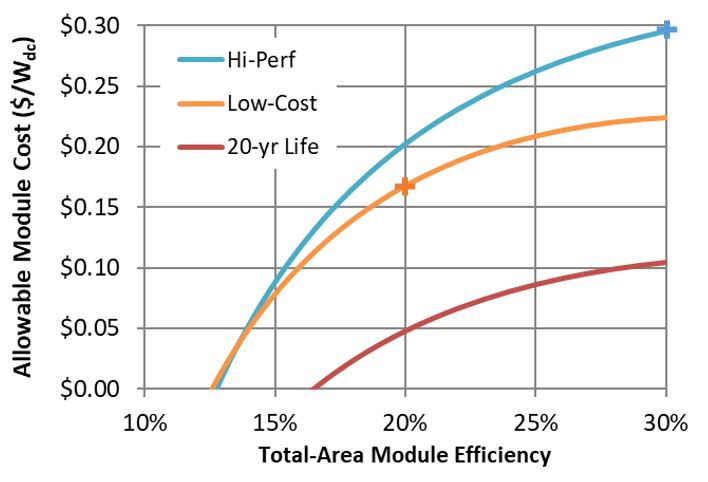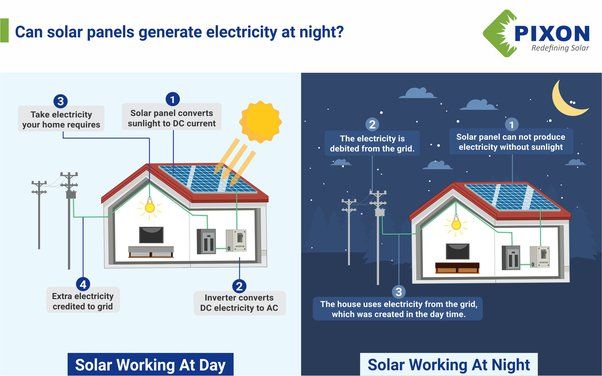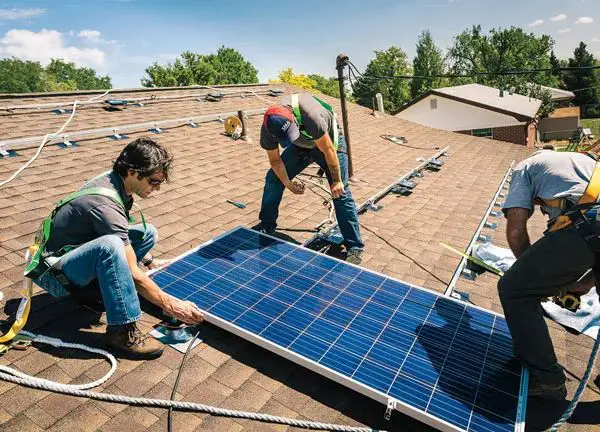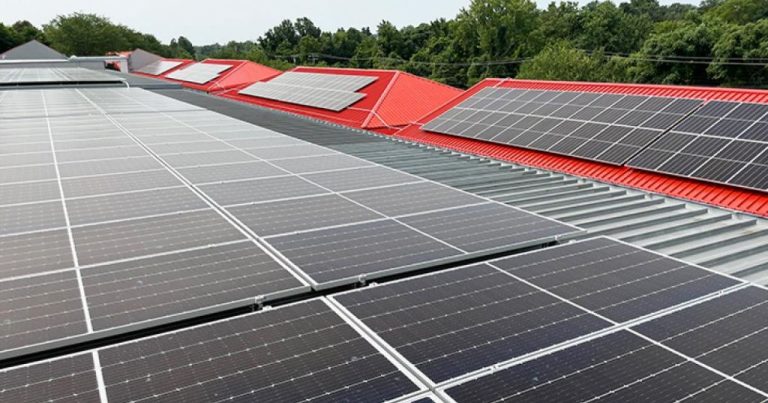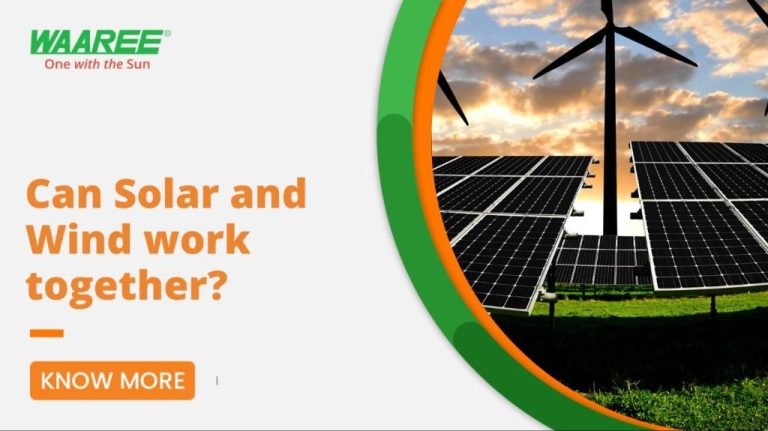What Is Renewable Examples?
Renewable energy comes from natural sources or processes that are constantly replenished. Some examples of renewable energy sources include solar, wind, hydropower, geothermal, and biofuels. Renewable energy provides an alternative to the finite fossil fuels that power much of the world today, like oil, natural gas, and coal.
Transitioning to renewable energy is important for several reasons. Renewables don’t produce greenhouse gas emissions, meaning they don’t contribute to climate change like burning fossil fuels does. Renewables are also unlimited – the sun provides enough energy in one hour to power the world for an entire year! With fossil fuel reserves limited, switching to renewables ensures access to energy long-term.
Renewables also enhance energy security by relying on domestic resources rather than imported fuels. Developing renewable energy creates jobs and spurs investments in new technologies. Overall, renewable energy promises a sustainable path forward to power the world cleanly and responsibly.
Solar
Solar energy refers to technologies that convert sunlight into electricity. The two main types of solar energy are solar photovoltaics (PV) and solar thermal technology.
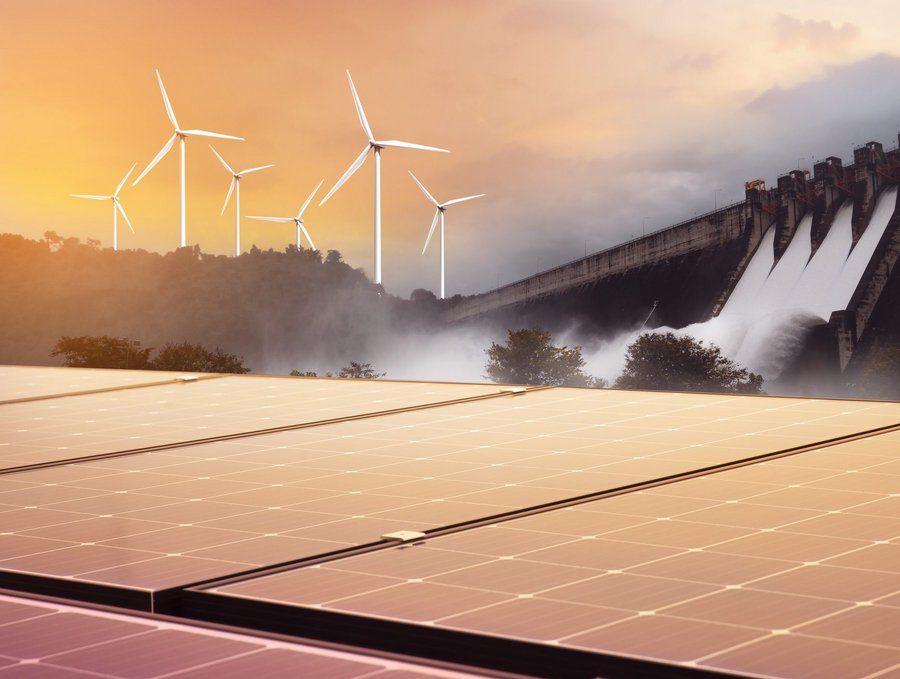
Solar PV uses solar cells made from materials like silicon to convert sunlight directly into electricity via the photovoltaic effect. Solar PV systems can be installed on rooftops or ground-mounted and connected to the electricity grid (grid-tied) or work off-grid. Small residential systems can power homes, while large utility-scale solar farms can produce electricity on a massive scale. The main advantage of solar PV is the ability to generate clean, renewable electricity without any ongoing fuel costs.
Solar thermal technologies use mirrors or lenses to concentrate sunlight to heat a fluid like water or oil, which is then used to produce steam to drive a turbine and generate electricity. Concentrated solar power (CSP) plants allow energy storage by heating material that can retain heat to continue producing electricity when the sun isn’t shining. CSP plants are almost always large, utility-scale installations. The main advantage of solar thermal is the built-in thermal storage, allowing electricity to be produced even when the sun goes down.
Both solar PV and CSP produce emissions-free renewable electricity from the sun and have seen massive growth and cost declines in recent years. Large-scale solar is now one of the cheapest sources of new electricity generation. With solar technology improving and costs falling, solar energy has emerged as a mainstream energy source and key part of plans to transition to clean, renewable energy.
Wind
Wind power harnesses the kinetic energy of moving air to generate electricity through wind turbines. Wind turbines convert this kinetic energy into mechanical power to drive generators. There are two main types of wind power: onshore wind and offshore wind.
Onshore wind turbines are located on land and make up most of the wind power capacity today. They are usually grouped together in large wind farms that contain dozens or even hundreds of individual wind turbines. Offshore wind turbines are located offshore in bodies of water like oceans, lakes, and rivers. Offshore wind holds great potential but currently makes up a smaller portion of wind power generation due to higher costs and challenges.
The size of wind turbines varies greatly. Small turbines used for residential or small business purposes are usually below 100 kilowatts. However, large commercial-scale turbines are typically 1-5 megawatts in power capacity, with turbine rotor diameters exceeding 120 meters. The power output of a turbine depends on factors like wind speed, swept area of the blades, and generator efficiency.
Wind power capacity and generation has expanded rapidly in recent decades. Total global wind power capacity reached around 743 gigawatts by the end of 2019. Many countries are investing heavily in wind energy to take advantage of its renewable, emissions-free electricity generation. Both turbine sizes and wind farm scales have increased dramatically to harness economies of scale. Floating offshore wind is an emerging technology that will unlock new potential wind resources. The future looks bright for this growing renewable energy source.
Hydropower
Hydroelectric dams are a common form of renewable energy produced from flowing water in rivers and streams. Large-scale hydroelectric dams have been built on many major rivers across the world. These massive dams utilize the height between water levels to generate power by directing water through turbines connected to generators. While large-scale hydroelectricity is renewable and reliable, construction of new dams raises significant environmental concerns.
Micro-hydro systems provide hydroelectric power on a smaller, localized scale. Small dams divert river water through a turbine to produce electricity and provide power to homes and communities nearby. Micro-hydro offers a sustainable energy solution, but is limited geographically to suitable river locations.
Pumped storage hydro facilities store energy by pumping water uphill into a reservoir when electricity demand is low. This stored energy can then be released to generate electricity during peak hours of demand. While not a direct renewable source, pumped hydro provides large-scale energy storage to better utilize power from intermittent renewables like wind and solar.
Geothermal
Geothermal energy comes from the heat within the earth. It is a renewable energy source that can be used for both electricity generation and heating/cooling applications. There are three main types of geothermal energy systems:
Geothermal electricity generation uses the earth’s heat to produce steam and drive a turbine connected to a generator. Wells are drilled into underground reservoirs of hot water called hydrothermal convection systems. The steam rotates the turbine, which activates the generator to produce electricity. Geothermal power plants generally have low emissions because steam is used rather than the burning of fossil fuels.
Geothermal heating/cooling uses lower temperature ground or water as a heat source in winter and heat sink in summer. It often uses a ground source heat pump to control the temperature. Direct use applications include heating buildings, growing plants in greenhouses, drying crops, heating water at fish farms, and several industrial processes. Geothermal heating/cooling is extremely efficient and has much lower operating costs than conventional heating and air conditioning systems.
Enhanced geothermal systems (EGS) are a new technology used for geothermal electricity generation. EGS creates reservoirs in hot dry rock through hydraulic fracturing. Water is pumped underground, heated, and brought back to the surface to produce electricity. EGS has the potential to greatly expand the use of geothermal energy in more locations worldwide.
Bioenergy
Bioenergy refers to renewable energy derived from organic matter, known as biomass. There are several ways biomass can be used to generate energy:
Biofuels like ethanol and biodiesel are made from plants and can replace gasoline and diesel in vehicles. Ethanol is commonly made from corn, sugar cane, or grasses. Biodiesel comes from vegetable oils, animal fats, and recycled cooking grease. Using biofuels reduces dependence on fossil fuels.
Biomass power plants burn biomass directly to produce steam and electricity. Biomass materials used include wood chips, agricultural waste, and garbage. In some cases plants are grown specifically to generate electricity through combustion. Using biomass for power generation can reduce greenhouse gas emissions compared to fossil fuels.
Biogas digesters harness the methane gas released by decomposing organic matter. At farms and landfills, biogas can be captured and used on-site for heating and electricity. This helps prevent methane from escaping into the atmosphere and causing further global warming. The nutrient-rich slurry left over can also be used as fertilizer.
Wave and Tidal
Wave and tidal energy harness the kinetic energy of ocean waves and tides to generate electricity. Wave power devices capture energy from the surface motion of ocean waves, while tidal power captures energy from the rise and fall of tides.
There are several ways to capture wave energy. Point absorber buoys float on the surface and move up and down with the waves, driving an electrical generator. Attenuators are long segmented floating structures oriented parallel to the wave direction, capturing energy as flexing joints move with the waves. Oscillating water columns use waves to compress air in a chamber, spinning a turbine. Overtopping devices have reservoirs that waves can fill and then drain through turbines.
Tidal energy works similarly to hydropower, except the water flow comes from the tidal currents rather than rivers. Tidal “barrages” span across tidal basins with gates to control the flow of water turning turbines. Tidal “stream” generators sit on the seafloor and capture energy from free-flowing tidal currents, like underwater wind turbines.
Pilot projects around the world are testing and demonstrating various wave and tidal energy devices. The European Marine Energy Centre (EMEC) in Scotland hosts multiple open-sea test sites. Significant wave and tidal resources exist globally, but technology is still advancing to improve efficiency and lower costs before wider commercial deployment.
Hydrogen
Hydrogen is emerging as a promising renewable energy carrier for the future. When produced through electrolysis powered by renewable electricity, hydrogen is known as “green hydrogen.” Green hydrogen represents a sustainable way to store and transport energy from intermittent renewable sources like solar and wind.
To produce green hydrogen, an electrolyzer uses electricity to split water molecules into hydrogen and oxygen. The renewable electricity can come from solar, wind, hydropower, or other renewable sources. The green hydrogen can then be compressed and stored for future energy needs. Compared to grey hydrogen produced from fossil fuels, green hydrogen has a minimal carbon footprint.
Green hydrogen has applications across many sectors of the economy. In transportation, it can power fuel cell electric vehicles. When blended into existing natural gas pipelines, hydrogen can help decarbonize heating systems. Green hydrogen can also be used as a feedstock in industrial processes and manufacturing to reduce fossil fuel consumption. Additionally, green hydrogen provides a zero-emission fuel source that complements renewable electricity generation.
With more investment and declining renewable electricity costs, green hydrogen is poised to grow as a sustainable energy solution for hard-to-decarbonize sectors. Producing hydrogen electrolytically using renewable energy offers an important tool for reducing greenhouse gas emissions across the global energy system.
Storage
Energy storage plays a critical role in supporting the growth of renewable energy sources like solar and wind. Because renewables rely on weather conditions to generate electricity, storage helps to smooth out fluctuations in power generation and match supply with demand. Energy can be stored in a variety of ways for later use.
Batteries are one of the most common storage technologies used with renewables. Lithium-ion batteries in particular have become popular due to their high efficiency and decreasing costs. Utility-scale battery storage facilities help to store excess solar or wind energy during times of peak generation and discharge it when needed. Homeowners with rooftop solar panels often use batteries to store excess energy for use at night.
Other storage technologies include pumped hydroelectric storage, compressed air energy storage, flywheels, and thermal storage. Pumped hydro facilities pump water uphill into a reservoir when electricity supply exceeds demand and then release it through hydro turbines to generate electricity when needed. These large-scale storage methods all help to provide grid stability and reliability as renewable penetration increases.
Continued innovation and declining costs in storage technologies will enable much higher utilization of renewable energy sources. Widespread energy storage is critical for transitioning to a more sustainable energy system based on wind, solar, and other renewables.
Conclusion
There are a number of renewable energy sources available today that are playing an increasingly important role in our energy landscape. Solar, wind, hydropower, geothermal, bioenergy, wave, tidal, and hydrogen energy are all renewable options that can help us move away from fossil fuels and toward a more sustainable future.
Solar and wind energy in particular have experienced dramatic growth over the past decade and show great potential for continued expansion. However, all of these renewable sources have an important role to play in reducing greenhouse gas emissions and mitigating climate change. Energy storage technology is also advancing quickly, helping to overcome intermittency issues associated with solar and wind power.
As we look to transition toward a low-carbon economy, it is essential that research, investment, and policy continue to support the accelerated deployment of renewable energy sources. With wise long-term planning and innovation, renewables can provide a major share of the world’s energy needs this century. The growth of renewable energy brings great promise for building a cleaner and more resilient energy system.

